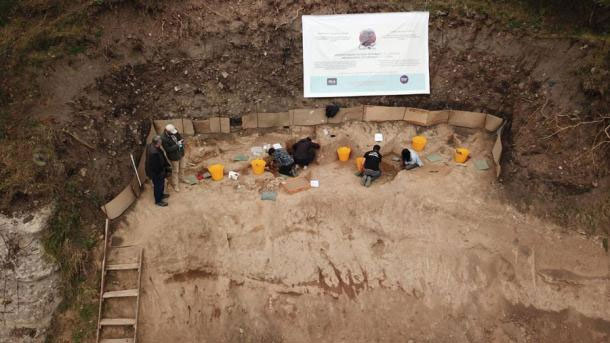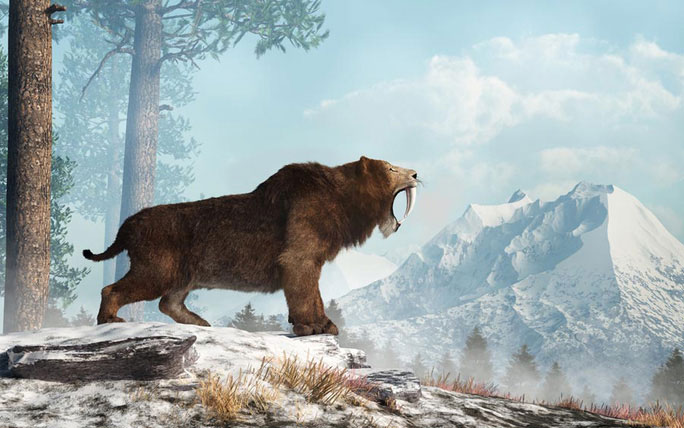One of the most fearsome beasts that roamed the Eurasian region millions of years ago may have encountered an even more terrifying predator – early humans, specifically Homo erectus.
New research from the National Museum of Georgia reveals findings that “completely change the previous understanding of the Orozmani site”, a famous archaeological site in Georgia, according to Agenda.

Scientists working at the archaeological site – (Photo: National Museum of Georgia).
Orozmani is a well-known site considered to be the first footprint of humans leaving Africa to explore the world – dating back 1.8 million years. The humans living here were Homo erectus, which translates to “upright man”, one of the earliest species relatively similar to modern humans, yet still exhibiting many wild characteristics. One of these traits was their lifestyle as top predators, with meat making up most of their diet.
According to Ancient Origins, in the recent excavation, scientists not only found Oldowan stone tools – tools that date back 2.6 million years – but also discovered remains of various animal species, the most intriguing of which was Homotherium, a fearsome saber-toothed cat that roamed the Earth from 4.5 million to 11,700 years ago.
Homotherium was distributed across many areas of North America, the Eurasian continent, and Africa. However, this is the first time its remains have been found alongside human tools.

Homotherium saber-toothed cat – (Photo: National Museum of Georgia).
However, given that this was an extremely fierce predator, the theory that it was domesticated by early humans and coexisted with them seems unlikely. Scientists believe that when Homo erectus explored Eurasia 1.8 million years ago, they competed with this creature for food and territory, as both were fearsome carnivores. The unfortunate Homotherium likely ended up as a meal for our ancestors.


















































